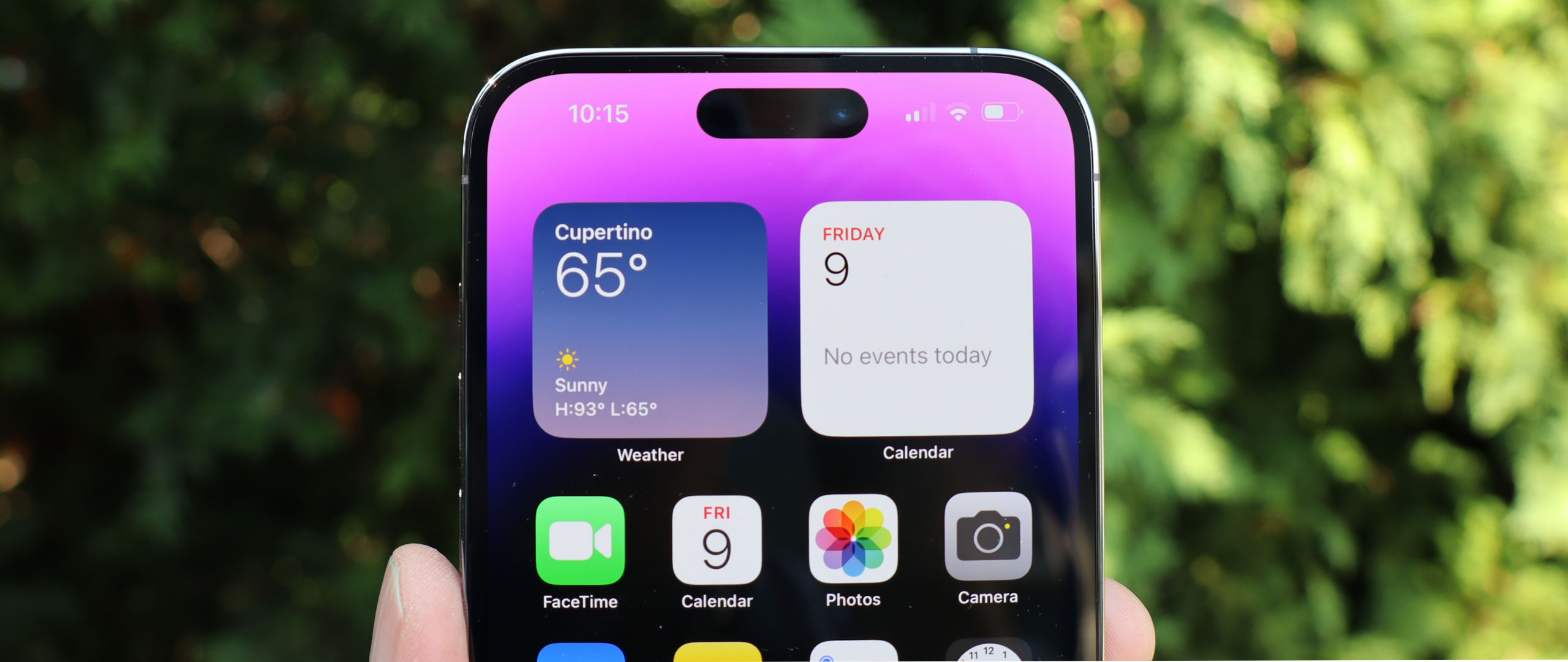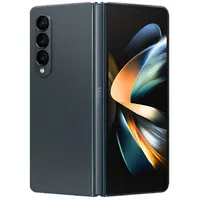TechRadar Verdict
The iPhone 14 Pro Max is truly the best of everything in the current iPhone world. It’s got the best design, the biggest screen, the best cameras, and the smartest display. You’ll pay for all of that but, if you’re determined to get an iPhone and want the absolute apex device, this is clearly the handset for you. If you can live with a slightly smaller display, and want less weight in your pocket, we might recommend the more compact 6.1-inch iPhone 14 Pro, instead.
Pros
- +
Great design and build
- +
Incredible camera quality
- +
Dynamic Island is clever and innovative
Cons
- -
3x zoom leaves you wanting more
- -
Still waiting for ultra-fast charging
- -
Battery life is weaker than last year
Why you can trust TechRadar
Two-minute review
Ahead of launch, we ran an informal Twitter poll on which new Apple iPhone 14 people wanted.
The iPhone 14 Pro Max was the clear favorite... and by a wide margin. It’s not just the bigger 6.7-inch display or the potential for more battery life, it seems current iPhone buyers want all the features that come with Apple’s premium handset.
And good news: this is the ultimate iPhone.
It’s no more powerful than the identical-but-smaller 6.1-inch iPhone 14 Pro, but noticeably more so than the new iPhone 14 and its big brother, the 6.7-inch iPhone 14 Plus.
For the first time in a while, Apple chose to put its best, fastest, and possibly most efficient silicon in just half of its new phones. The iPhone 14 and 14 Plus get the A15 Bionic chip found in the iPhone 13 Pro and 13 Pro Max (it has one more GPU core than the A15 Bionic in the standard iPhone 13), while the iPhone 14 Pro and 14 Pro Max get the all-new 4-nanometer process A16 Bionic.
$899 / £949 / AU$1,579 for a 6.7-inch iPhone 14 Plus might sound good on paper, but consumers will, apparently, gladly pay $1,099 / £1,199 / AU$1,899 for the full-featured iPhone 14 Pro Max – what they consider the best iPhone, even in these cash-strapped times.
At least Apple and its carrier partners are offering some decent iPhone 14 deals.
Sign up for breaking news, reviews, opinion, top tech deals, and more.
There are even $1,000 trade-in deals in the US, though Apple and the carriers have to verify the trade-in value – and don’t expect to get that kind of cash for an iPhone 6 or even an iPhone 8.
If we’re talking about value, though, the iPhone 14 Pro Max earns its keep with snappy performance, a truly radiant screen that now can reach a sun-beating 2,000-nit brilliance, while also delivering new low-power 1Hz always-on display functionality that’s just there for a quick glance.
The thing people will be talking about is the new Dynamic Island. Count us among those who were completely surprised by Apple’s unusual solution for the notch, an ‘island’ of flexible display floating just a few millimeters from the top edge of the screen.
This island still contains the front camera (upgraded with autofocus) and sensors for 3D measurement as part of Face ID, but some technology, like the proximity sensor, is now hidden behind the display. What’s left is actually a pair of cutouts – one pill shaped, and one a circle – but with a small area of active screen between them.
Altogether, it looks like a smaller cylinder and can appear all-black when it isn’t active with some animation or notification. However, it has the remarkable ability to transform based on screen activity and gestures.
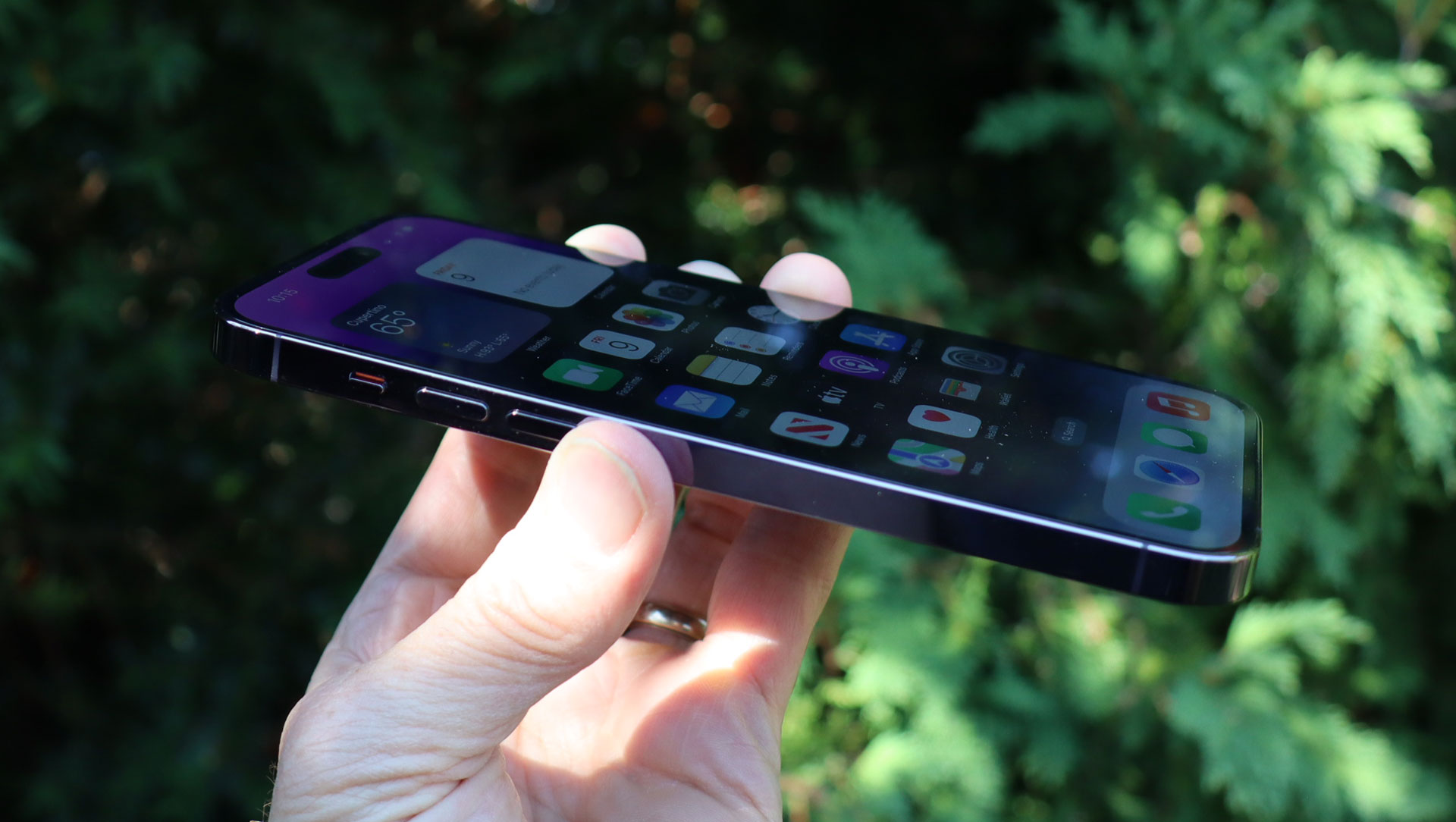
There is some reasonable concern about what so much swiping across the front-facing camera might mean for selfies, but at least there’s an oleophobic coating to reduce smudges on the lens.
An always-on display that can refresh at just 1Hz to save battery has been a long time coming. Apple has been well behind the competition in implementing this feature, but as ever it’s done it in its own way.
It’s nice to be able to see the time, date, and information-filled widgets on your iPhone’s screen without having to touch and unlock it - although it does kill the battery somewhat.
The upgraded camera array finally brings pixel binning to the iPhone – a favorite feature on numerous Android devices, which combines brightness and color data from four (or more) pixels on the sensor for improved low-light performance and color accuracy.
For the main camera, Apple has gone with a 48MP sensor (a far cry from, say, the Samsung Galaxy S22 Ultra’s 108MP sensor), although this is more of a technological advancement than a headline number, as you'll see below.
This sensor is, by the way, paired with an excellent lens. You can also shoot in 48MP ProRAW mode, which is great for pro-shooters (you’ll need to turn this option on in the settings).
The 12MP ultrawide camera still offers a field of view of 120 degrees, which is 'wide enough' in our books, and the quality is enhanced with a much larger sensor and more focus pixels. This is reflected in brighter and more vibrant wide-angle photos and much-improved macro photography, which also uses the new ultrawide lens.
Apple can’t, however, seem to figure out how to give us more than 3x optical zoom, even as competitors are offering 10x optical and 100x (albeit highly interpolated) ‘Space Zoom’. We would have settled for 5x optical zoom.
Instead of greater zoom, you get an additional in-between level of 2x optical zoom, which is more useful than it sounds, especially because the zoom is really just employing a central chunk of the full 48MP sensor; no compression, just a marquee from the main sensor that gives you enough information to get closer without losing any quality, as you would with a digital zoom.
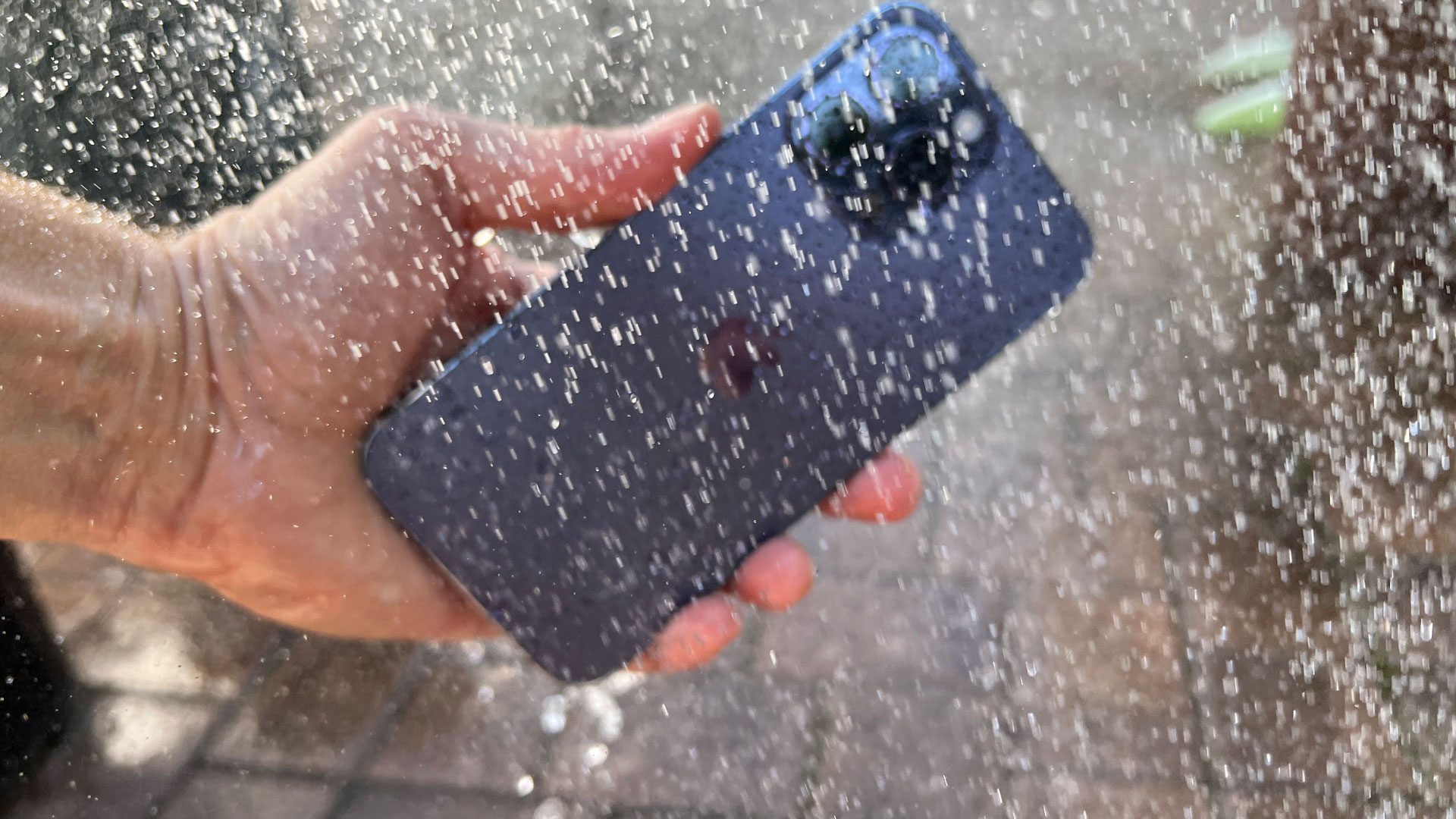
Powering the whole show is the new A16 Bionic chip. It’s an upgrade from the A15 Bionic (which, as mentioned, lives on in the iPhone 14 and 14 Plus), with 16 billion transistors and a smaller, more efficient 4-nanometer process.
The benchmarks, and the real-world performance, appear to bear out the strength of this new Apple silicon, which reaches into almost every corner of iPhone 14 Pro Max performance (photos, the always-on display, and the Dynamic Island).
Between the new display technology more efficient A16 Bionic, and the size of the 14 Pro Max, we expected more than the 13 hours of mixed-use battery life we got - although this can be improved when removing the always-on display.
Further testing indoors with the screen kept on all day and mostly streaming video resulted in essentially double that 13-hour figure, and much closer to Apple’s estimated 29 hours of streaming video performance.
This, by the way, is Apple’s first eSIM-only iPhone (in the US, at least – the SIM slot lives on in other markets). It’s weird, but also pleasing to lose the SIM tray, and thankfully the eSIM setup was remarkably easy.
While we could experience the new eSIM, we did not – for obvious reasons – test the new crash-detection feature, nor the new emergency satellite SOS. We did see the latter in action though – more on that in the full review further down.
iPhone 14 Pro Max price and release date
- 128GB: $1,099 / £1,199 / AU$1,899
- 256GB: $1,199 / £1,309 / AU$2,099
- 512GB: $1,399 / £1,529 / AU$2,419
- 1TB: $1,599 / £1,740 / AU$2,769
Apple unveiled its entire iPhone 14 line – the iPhone 14, iPhone 14 Plus, iPhone 14 Pro and the iPhone 14 Pro Max – on September 7, 2022.
Pre-orders kicked off on September 9, and three members of the line (that excludes the Plus, which arrived on October 7) are available to buy as of September 16. The 14 Pro Max starts at $1,099 / £1,199 / AU$1,899 for the 128GB model, but you can get it with up to 1TB of storage. Unlike most Android phones, there are no options for additional memory, beyond the base of roughly 6GB.
However, while the price has remained the same as the iPhone 13 Pro Max in some territories, our UK readers will have to put up with a pretty hefty price hike year on year - this is now an incredibly expensive phone if you want to go for the 256GB that we think most people should consider.
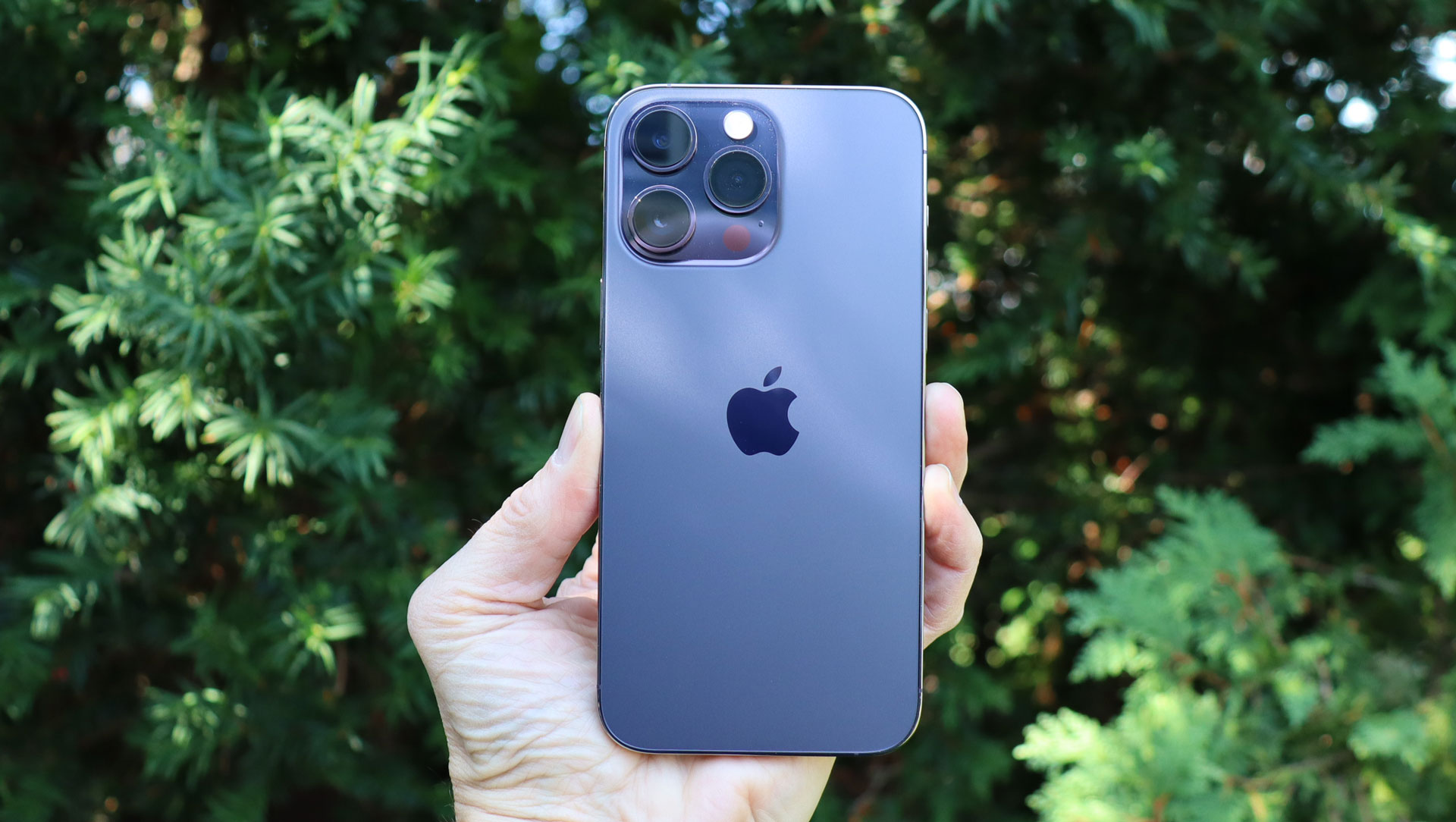
- Value score: 4/5
iPhone 14 Pro Max specs
The iPhone 14 Pro Max comes in four storage configurations – 128GB, 256GB, 512GB and 1TB – with 6GB of RAM offered across the board.
| Header Cell - Column 1 | |
|---|---|
| Dimensions: | 77.6 x 160.7 x 7.85mm |
| Weight: | 240g |
| Screen: | 6.7-inch Super XDR OLED |
| Resolution: | 2796 x 1290 pixels |
| Refresh rate | Adaptive 1-120Hz |
| CPU: | A16 Bionic |
| RAM: | 6GB |
| Storage: | 128GB / 256GB / 512GB / 1TB |
| OS: | iOS 16 |
| Rear Cameras: | 48MP main (24mm, ƒ/1.78), 12MP ultrawide (13mm, ƒ/2.2), 12MP telephoto (77mm, f/2.8) |
| Front Camera: | 12MP |
| Battery: | 4,323mAh |
| Charging: | 20W (wired) + MagSafe & wireless |
| Colors: | Space Black, silver, gold, Deep Purple |
iPhone 14 Pro Max design
- Familiar 'Pro' design
- Size only slightly different
- Display has a fresh look without the notch
At a glance, and aside from the glorious new Deep Purple finish, the iPhone 14 Pro Max could be mistaken for the iPhone 13 Pro Max. It’s that similar. Still, there are some subtle differences.
At 160.7 x 77.6 x 7.85mm, the iPhone 14 Pro Max is slightly shorter and narrower than the last phone, and a hair thicker. None of this is noticeable when you look at or hold the phone; perhaps that’s because, at 240g, the weight is unchanged from the iPhone 13 Pro Max.
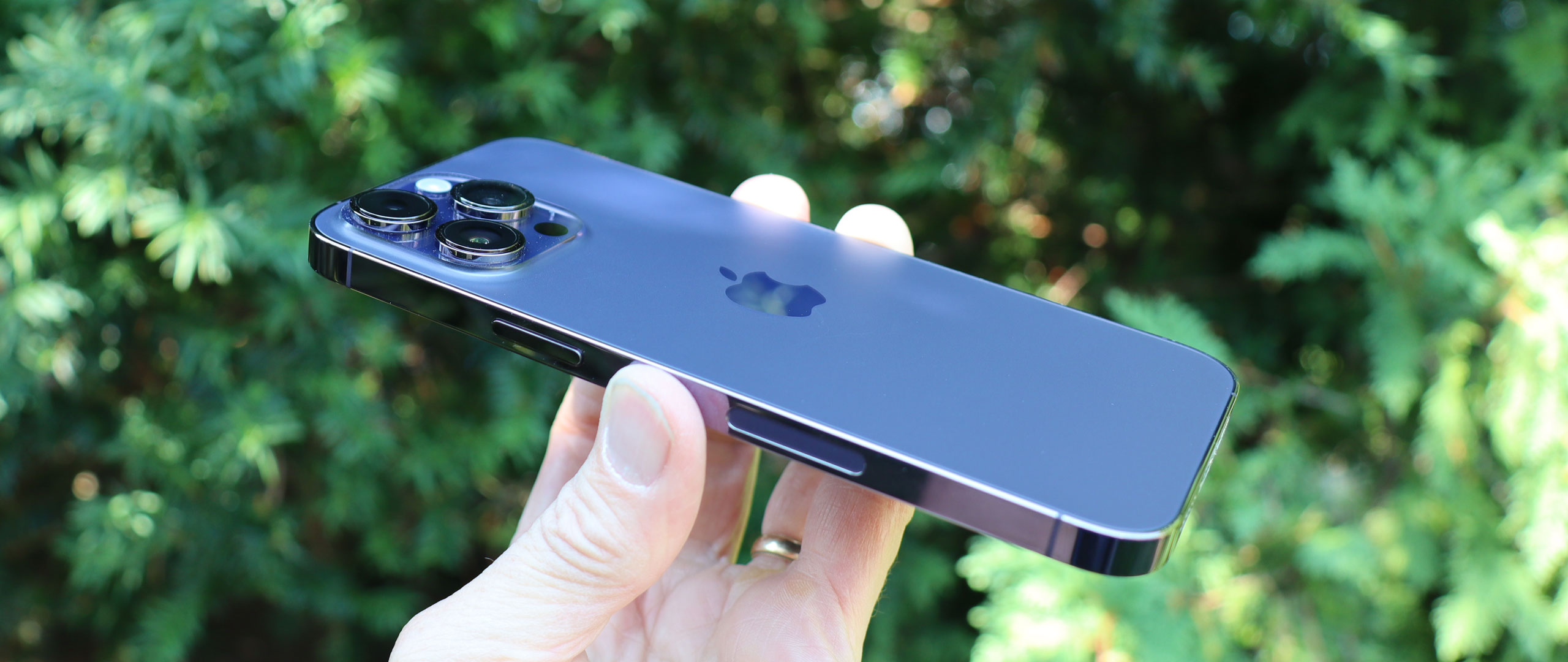
With the iPhone 14 Pro Max (and the 14 Pro), you get Apple’s premium material experience; which means a polished stainless steel frame, with frosted glass on the back and front.
The front display is protected by Apple’s transparent Ceramic Shield, which should safeguard it from damage (we did not drop or purposely scratch the screen to test it, but in recent drop tests it showed that the front of the phone is clearly better able to resist drops, where the rear glass is less so.
We did accidentally drop the iPhone 14 Pro Max during our testing, and it survived just fine - but a good iPhone 14 Pro Max case is probably a good idea.
Things like button placement for power/sleep/Siri, the volume controls and the silence switch are identical to the iPhone 13 Pro Max. The big difference, naturally, is the lack of a SIM slot on our test device (and all those sold in the US). It makes for a cleaner, more pleasing look.
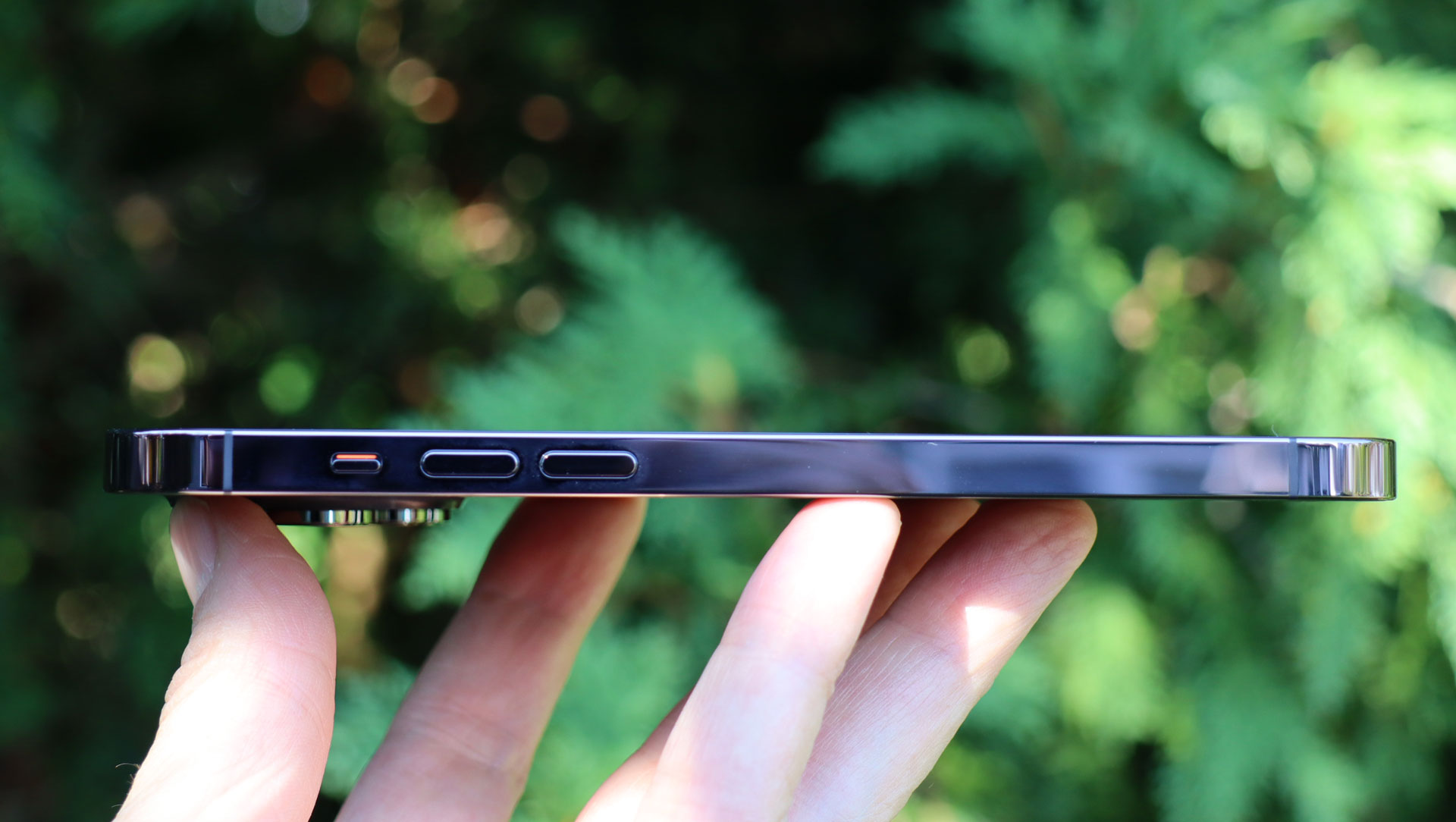
Even though the camera array design is similar to the iPhone 13’s, the lenses are all slightly larger (maybe by a millimeter or two), so you'll see that the array looks even more gargantuan. We pulled out an iPhone XS Max the other day, which has just two cameras in a lozenge shape, and we couldn't believe how small they looked.
On the bottom of the phone, the powerful stereo speaker (with the second, display-based speaker, they got to 85db in our tests), and mic grilles look the same, as does the somehow surviving Lightning port. Perhaps we’ll see a USB-C iPhone next year or the year after that – it’s hard to imagine that Apple will be able to skirt the upcoming European Union port rules for much longer.
Overall, it’s a design that is inescapably Apple, and quite striking. It’s also dust- and water-resistant. To test that, we ran the phone through a sprinkler shower – it survived intact, and we think it liked it.
- Design score: 4.5/5
iPhone 14 Pro Max display
- 6.7-inch Super Retina XDR is still gorgeous
- Dynamic Island replaces the notch
- Adaptive refresh and Always-on are welcome additions
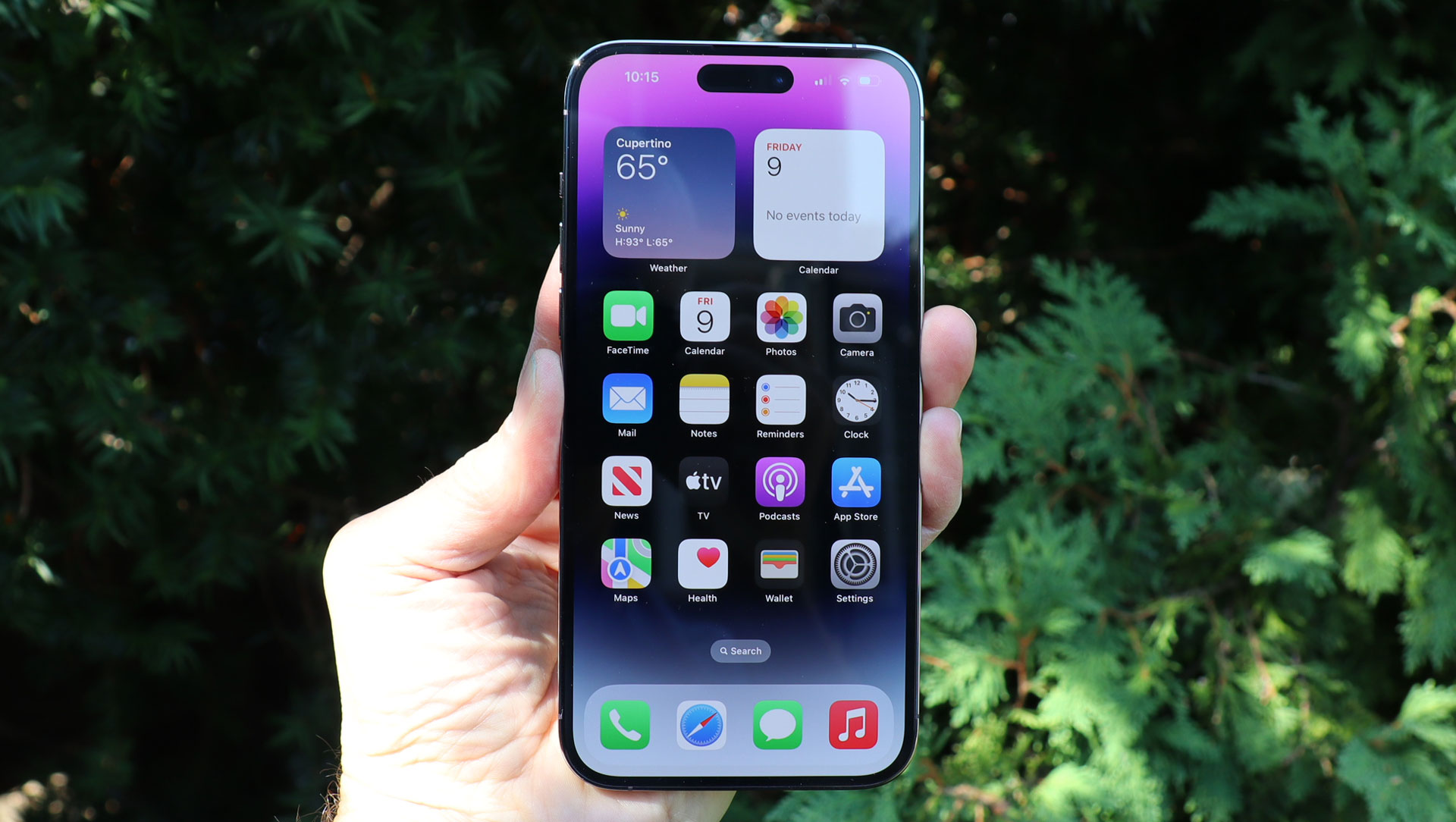
While some might argue that the current iPhone design language is getting a little old, it’s revitalized here by the reworked Super Retina XDR display. Aside from the powerful A16 Bionic under the hood, the iPhone 14 Pro Max’s screen features the new phone’s biggest innovation: the Dynamic Island.
The notch is dead, and in its place is what appears to be an oblong cutout in the slightly more pixel-rich 2796 x1290 pixel display. Instead of hugging the top of the OLED screen and encompassing that ultra-thin speaker slot, the Dynamic Island lives up to its name and floats a few millimeters down from that top edge.
There are a number of things that are not immediately obvious when you look at this dark space. First, it doesn’t house all the old TrueDepth components. The 12MP camera is still there (now with autofocus), as are the IR sensor and flood illuminator; however, the proximity sensor is now hidden behind the screen. Second, the entirety of the Dynamic Island is touch sensitive.
Third, this little black space is able to change shape, and that's where it really earns its stripes.
A closer look at the Dynamic Island reveals a pill-shaped cutout and a circle, separated by a small space, and surrounded by the black ‘island’. The separation area is filled with pixels; notable because the iPhone can use them for things like its security notification (a little green dot that lets you know the camera or mic is in use).
That extra patch of pixels helps create the illusion that the entire space is fungible, as it expands and contracts for, say, Face ID recognition (both registration and reading your face for every unlock), and to accommodate little audio icons that indicate music playing.
Since the entire surface of the Dynamic Island is touch sensitive, you can use gestures to access – for instance – music, Maps, Find My, your iPhone lock status, incoming calls, and more.
What’s remarkable about this little piece of display is how much it looks like one interactive blob, and not a collection of sensors, cameras, and some floating pixels. Part of that is due to Apple’s use of black, both in the physical components of the Dynamic Island and the inky blacks generated by the iPhone 14 Pro Max’s OLED screen. It’s hard to know where the hardware ends and the software begins. Bravo, Apple.
(One thing you might find annoying: when lots is happening, such as music playback and data connection, you won't know whether you've got 4G / 5G coverage, as that icon makes way for a wider lozenge).
Are we a little worried about gesturing right over the TrueDepth camera and ending up with smudged selfies? Yes, but in testing, that never happened. In fact, these new autofocus-assisted selfies look excellent. The Dynamic Island ends up being one of our favorite Apple software/hardware innovations in a while.
Apple introduced ProMotion with the iPhone 13 Pro and Pro Max, cranking up the screen refresh rate to 120Hz. Now, the iPhone 14 Pro Max (and Pro) offer an even wider adaptive refresh rate range, which can go from 1z to 120Hz.
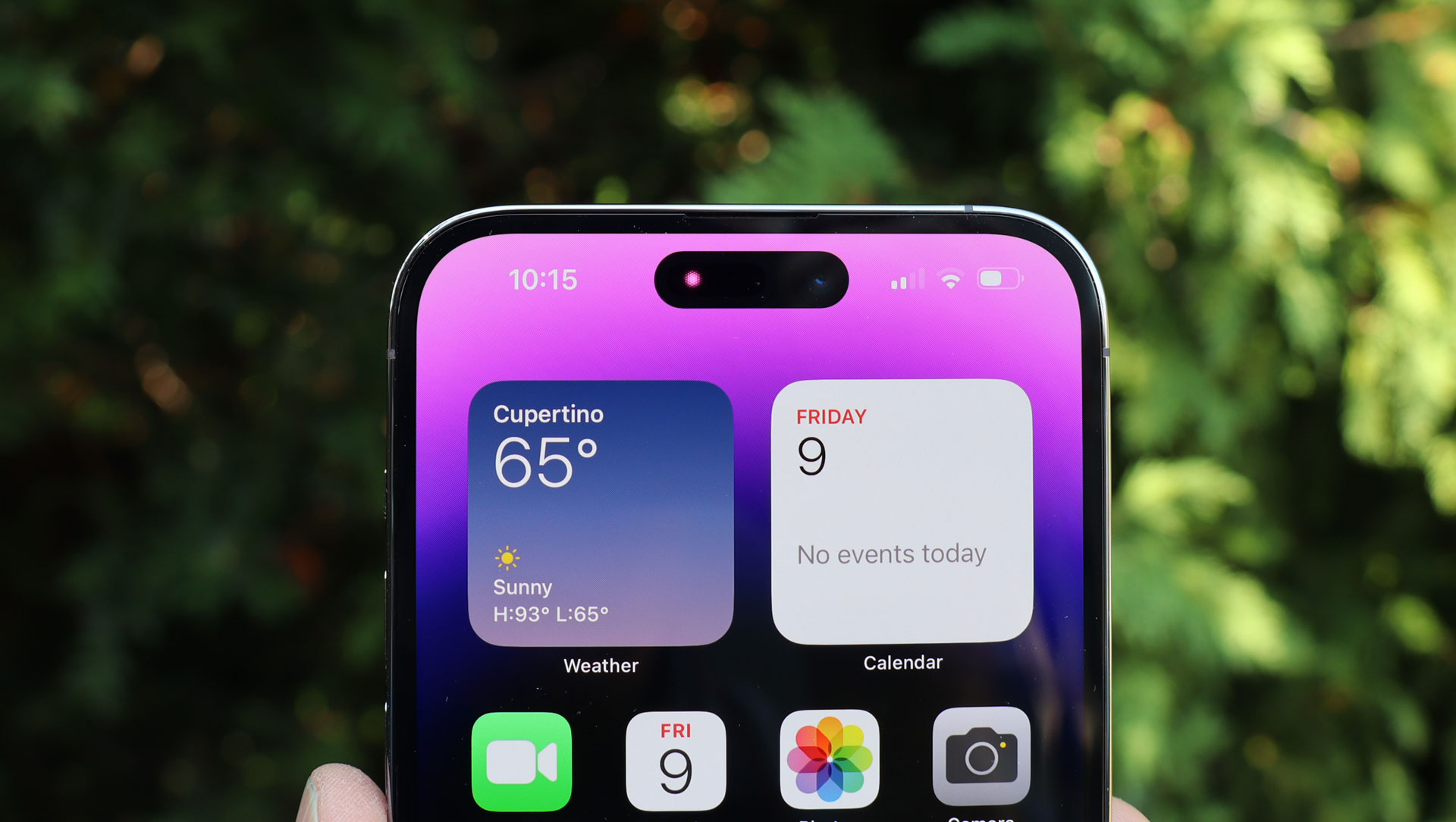
It’s difficult to test refresh rates. The promise is that 120Hz will offer smooth motion for supported videos and games, while lower refresh rates (down to 10Hz) work nicely for more static pages. The default refresh rate appears to be 60Hz, and generally, everything looks as it should on the iPhone 14 Pro Max.
There is also that 1Hz refresh rate, but that’s reserved for the new always-on display mode. That’s right: Apple finally added an always-on screen option to the iPhone 14 Pro Max and 14 Pro (but not the iPhone 14 and 14 Plus).
Apple has approached implementing this feature in a different way to the Android brigade.
Instead of reverting to a simplified black-and-white screen, Apple drains most of the brightness and much of the color, but leaves visible information like the date, time, focus mode, widget details, and photos you might have as your lock screen.
This display will even show the media you’re playing, like an album cover, but this comes at a real cost to battery power, taking about 2% per hour on average.
While it's great to have this glanceable screen, there is a sense that there's too much going on. We don't need a full wallpaper and widgets and album art most of the time - in fact, we often worried we'd left the iPhone unlocked.
We did enjoy seeing all this information in one place without needing to touch the phone, but perhaps a future iOS 16 update will bring the ability to slim this feature down: perhaps just a clock and a single widget, rather than the full suite or nothing.
While the iPhone 14 Pro Max display can go purposefully dim, it also has the ability to shine quite brilliantly. The typical brightness is 1,000 nits, but it can get to 1,600 nits for HDR, and outdoors will push the nits to a sunlight-beating 2,000 nits.
We were impressed by how, no matter the ambient light, we could still see the iPhone’s screen. Keep in mind, though, that a day outside with the screen pumping that much brightness means your battery won't last that promised 29 hours (spoiler alert: it didn’t for us).
- Display score: 5/5
iPhone 14 Pro Max cameras
- Finally gets a 48MP quad-pixel sensor
- Upgrades across the board for the three-lens array
- TrueDepth camera gains autofocus
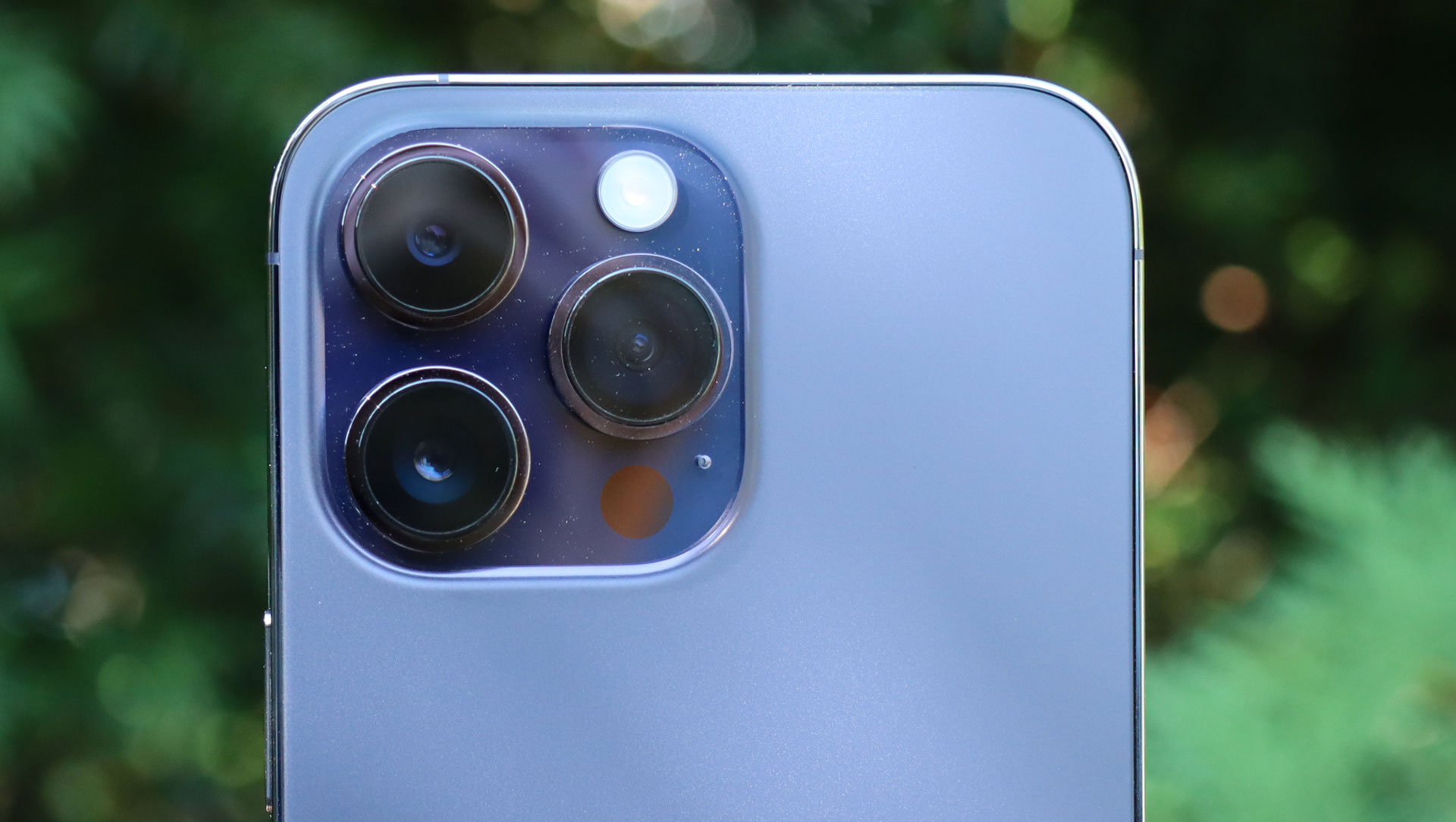
While the iPhone 14 Pro Max’s (and iPhone 14 Pro’s) camera array may look similar to the one on the iPhone 13 Pro Max, the lenses and sensors are all different.
The star of this triad is the 48MP quad-pixel main camera. Apple took years to introduce a high-pixel-count sensor like this and, yes, is treating quad-pixel binning as if it’s something new.
It’s not. On the Samsung Galaxy S22 Ultra, the 108MP main sensor uses nine-pixel binning. In both instances, the sensors take the data of multiple pixels and combine them into one bigger, richer effective pixel for improved colors and low-light performance.
On the iPhone 14 Pro Max, most people will shoot in 12MP mode. To enable full 48MP raw format shooting you have to dig into the settings, which will add the ‘raw’ option to the camera interface.
Shooting in RAW (or ProRAW, which is Apple's smart computational combination of RAW and processor smarts) doesn’t appear to make much difference to image quality as viewed on the iPhone’s display, but that’s because it’s really intended for pro shooters who want to manipulate uncompressed images in, for instance, Photoshop.
Raw images are stored as large DNG files on the iPhone. Opening such photos in Photoshop's Camera Raw editor, lets you adjust the image in minute detail, for some stunning visual results. You can also edit raw images in the iPhone’s native camera app, or download Adobe Lightroom to your phone for even more editing control on the go. It's an underloved feature, and one you should really play with.
- 48MP Main camera (24mm, f/1.78)
- 12MP Ultra Wide (13mm, f/2.2)
- 12MP 3x Telephoto (77mm f/2.8)
- 12MP front-facing TrueDepth camera (f/1.9)
The 48MP sensor does serve another purpose. There’s now a 2x optical zoom option in the iPhone camera app.
Instead of using the dedicated 12MP 3x optical zoom lens, this mode uses a central 12MP sub-section of the main 48MP sensor to create what is effectively an additional 48mm, f/1.78 aperture lens.
In this way, it provides full-resolution optical zoom without the need for an additional dedicated 2x sensor. That wider aperture makes for even better portrait-mode images than you’ll get using the main lens as standard too.
While there’s nothing wrong with Apple’s 3x optical zoom 77mm f/2.8 lens, (it takes beautiful pictures), it feels underpowered compared to the 10x optical zoom that’s available on Samsung’s Galaxy S22 Ultra. It will result in grainier images than just getting closer with the main sensor, and the difference is quite marked.
Apple simply has no answer to Samsung’s 100x Space Zoom. In a practical sense, the iPhone 14 Pro Max’s 15x digital zoom fails when it comes to long range shots, but clearly the brand sees moon-shooting as a gimmick, rather than a necessity.
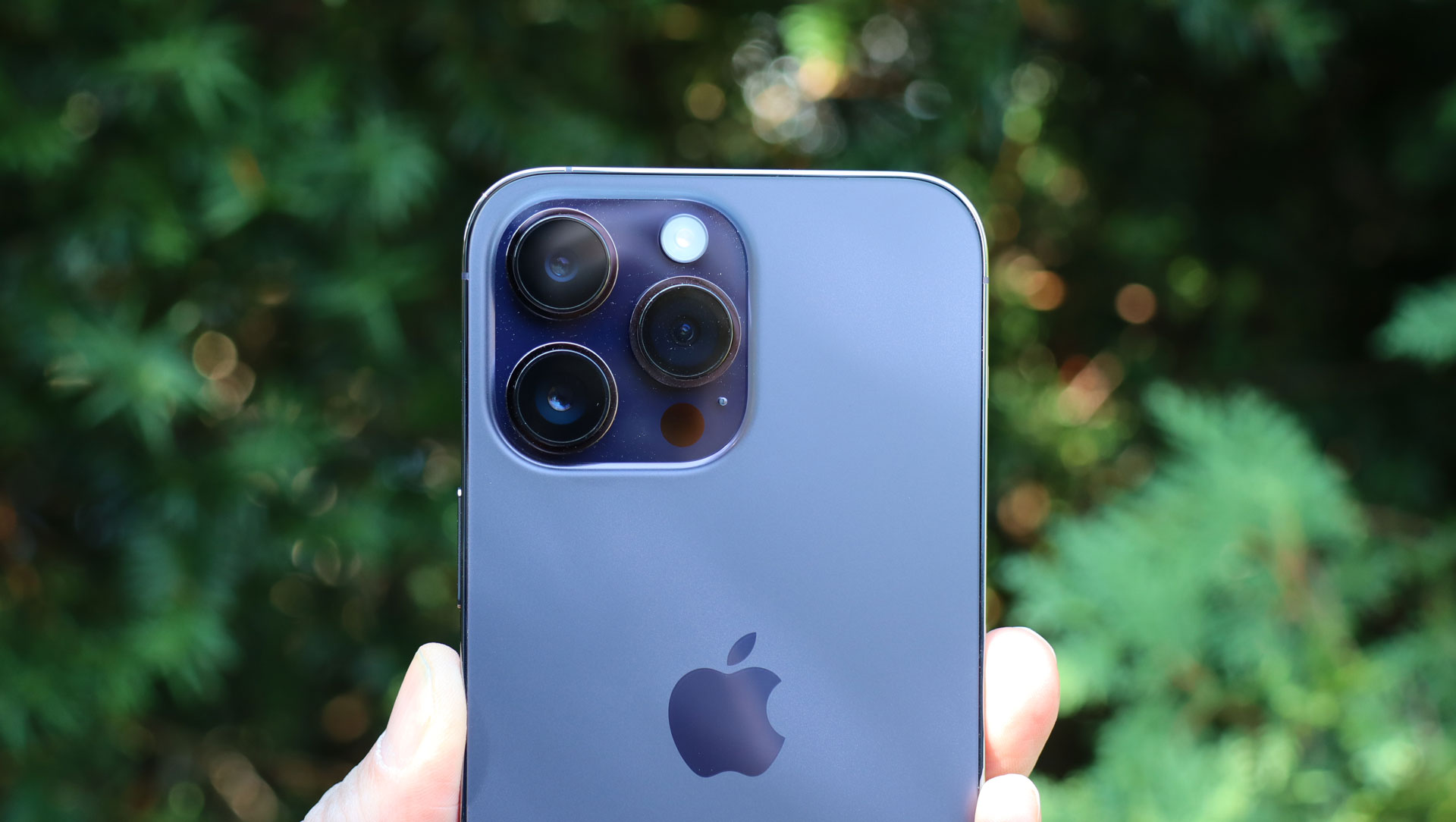
Apple has also upgraded the series’ video capabilities to support 4K 30fps Cinema mode, which does look excellent. The new Action mode is useful tool, as long as you understand that it smooths out extremely shaky video by intelligently cropping in on footage. It’s good though, even if we don’t know how often we’d use it.
Interestingly, Apple has opted not to introduce 8K video recording (a rumored addition in the lead-up to the phones’ launch), but while some might see this as a deficit, we see it as a blessing. 8K videos would quickly fill up even the largest iPhone storage capacity, and for what? How many of you have 8K TVs at home?
Sure, many pro users would probably get use from this feature, but we think we're at least a year from that being a much-needed feature, especially as it would come at the cost of storage.
In general, Apple’s camera system and image-capture capabilities remain top tier, meaning it retains Apple's title of offering one of the best camera phones on the market, with beautiful images from the 48MP sensor, and improved macro mode shots.
Photos look better because of Apple’s new Photonic Engine (technology detailed in our dedicated iPhone 14 camera explainer). Low-light images and night mode photos of a starry sky look better and this is why.
- Camera score: 4/5
Camera samples







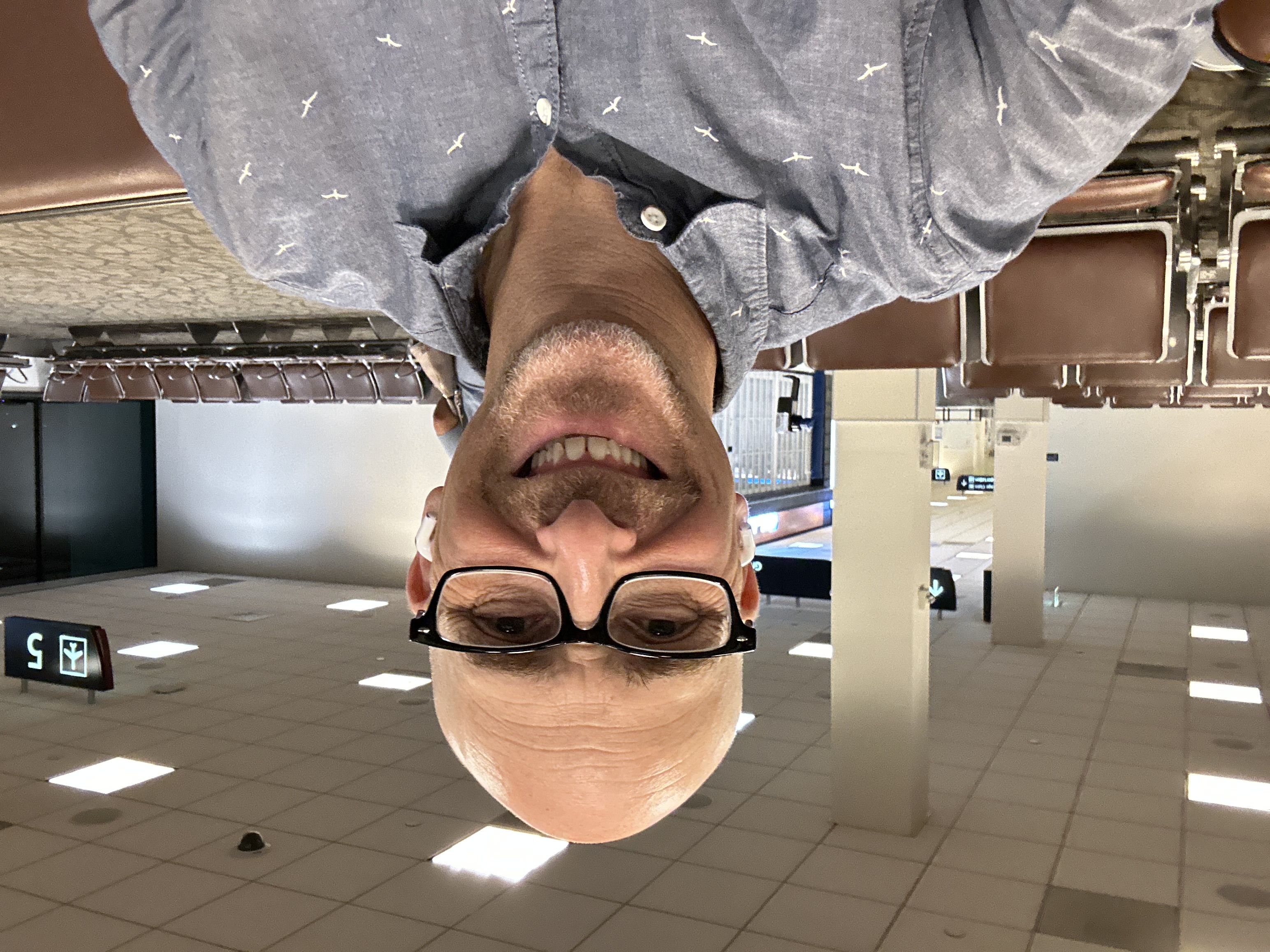
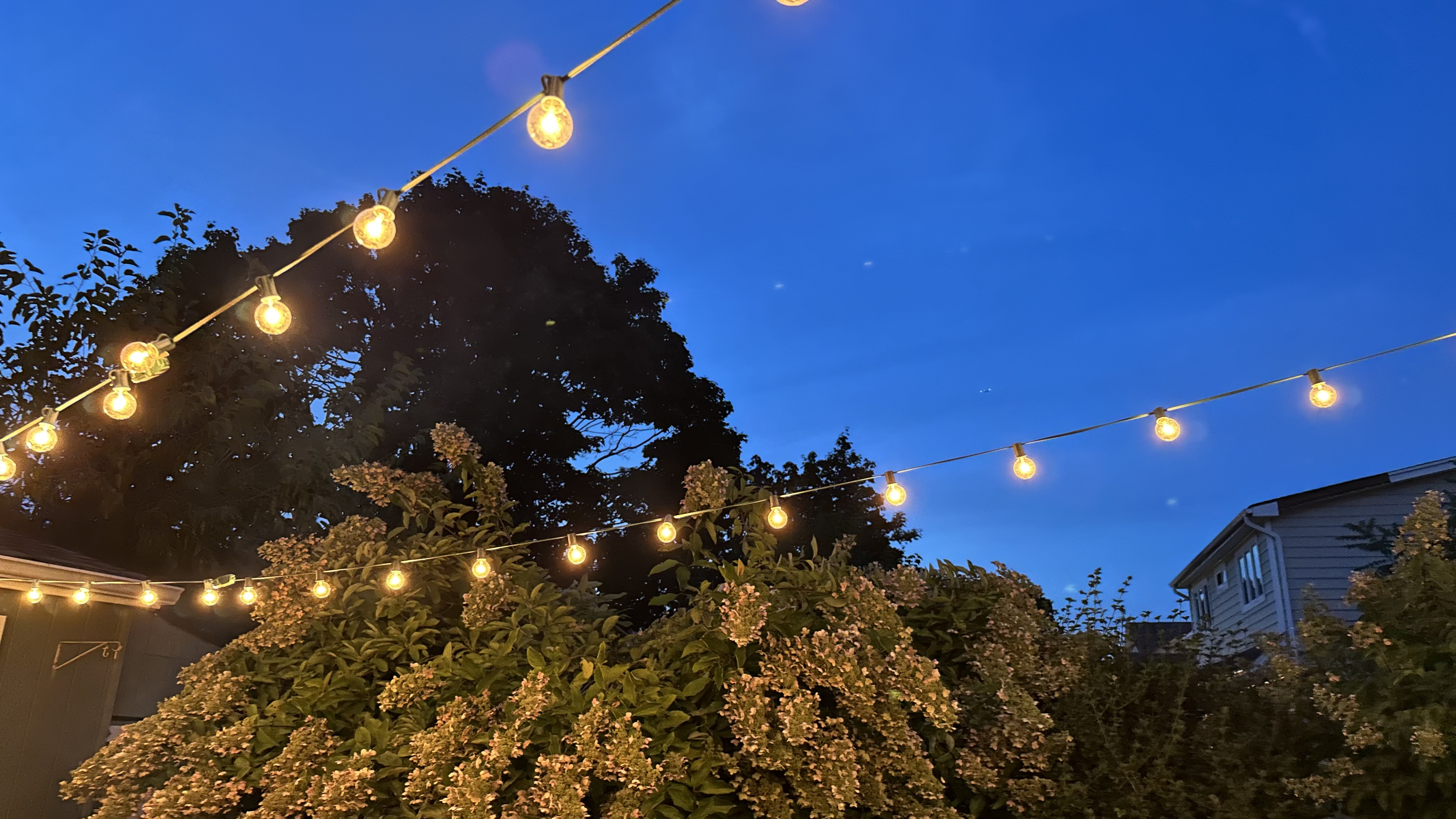


iPhone 14 Pro Max battery
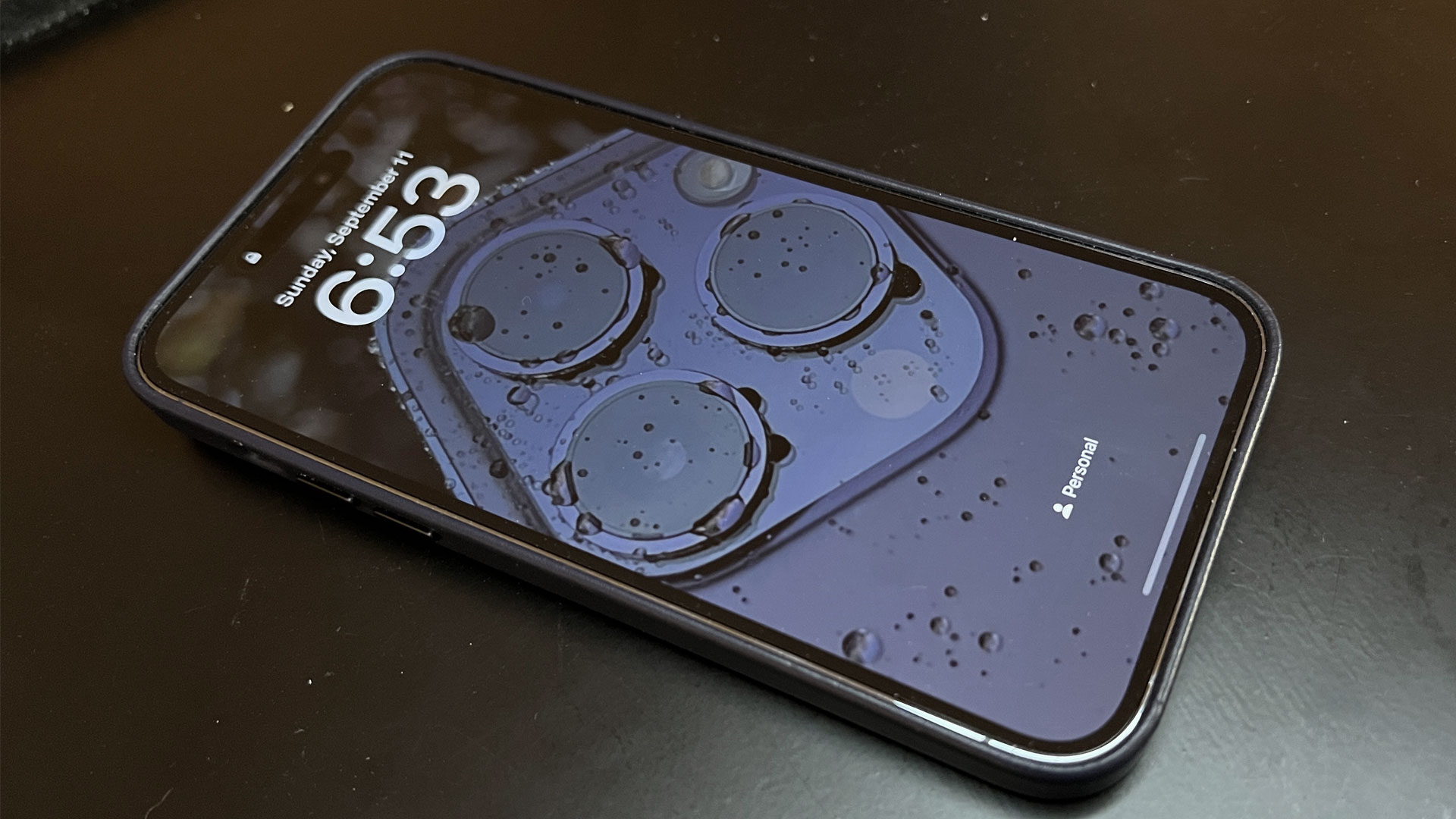
- Battery life disappoints with always-on display
- 26 hours possible with limited, indoor use
- Always on and outdoor, ultra-bright use reduces battery life hard
As ever, Apple hasn’t revealed the size of the iPhone 14 Pro Max battery, but snooping around reveals that it’s actually marginally smaller than the previous Pro Max’s (4,323mAh vs 4,352mAh), despite promising a higher 29 hours of video playback (compared to the iPhone 13 Pro Max’s 28-hours playback); presumably gaining a bit of battery life thanks to the more efficient A16 Bionic chip.
In our tests, we found the iPhone 14 Pro Max doesn't have the battery prowess of its predecessor, which was a disappointment - that primarily came from the always-on display, or using the phone outside in powerful, bright conditions.
When using the phone in mixed conditions, which included commuting across the city, streaming video, listening to music, browsing email - heavy use, indeed - we found that phone ran out of juice by about 10PM, having come off the charger at 6AM.
That's a situation we never once found ourselves in using the iPhone 13 Pro Max, and it was pretty shocking. However, we repeated the test without the always-on display showing (so the screen just goes dark) and we got to 2:30AM with 5% left, having coming off charge at 5:15AM.
If you're going to absolutely hammer the battery - that is, using it to navigate using Google Maps while sharing data with an iPad, for instance - you'll see larger drops. From a phone off charge at 9:45AM, we were at 45% battery by 14:30. This is pretty normal performance, yielding about 10 hours' use if you really crank things up.
In short, we found that using the phone outdoors in bright sunlight and performing a wide variety of tasks – taking photos, playing videos, gaming, and web browsing – meant the battery life fell far below the anticipated full day of performance. It was closer to 13 hours.
Inside, mostly streaming video - even with the always-on display firing - was an entirely different story. We got 26 hours of playback.
In our lab tests, the 14 Pro Max actually out-performed the 13 Pro Max by about an hour in our rundown testing, where we'll loop websites over Wi-Fi to assess the longevity - it shows that Apple has indeed improved efficiency with the new A16 chip.
The reality is that your mileage will vary depending on what you’re doing with the iPhone 14 Pro Max. Plus, the new always-on screen, while refreshing at a highly efficient 1Hz, definitely eats at least 1-2% power per hour over a locked, off screen... which adds up.
The iPhone 14 Pro Max – which can charge with MagSafe and Qi chargers – does not have ultra-fast charging capabilities.
Still, Apple says it can recharge to 50% in 30 minutes with an optional 20W charger (the phone ships with a USB-C-to-Lighting cable, but no charging brick). In our tests, we got 47% in 30 minutes.
And as we've touched on a few times, the iPhone 14 series doesn't feature USB-C, we suspect that's now reserved for the iPhone 15.
- Battery score: 4/5
iPhone 14 Pro Max audio
- Impressive audio quality
- Microphones perform well in voice calls
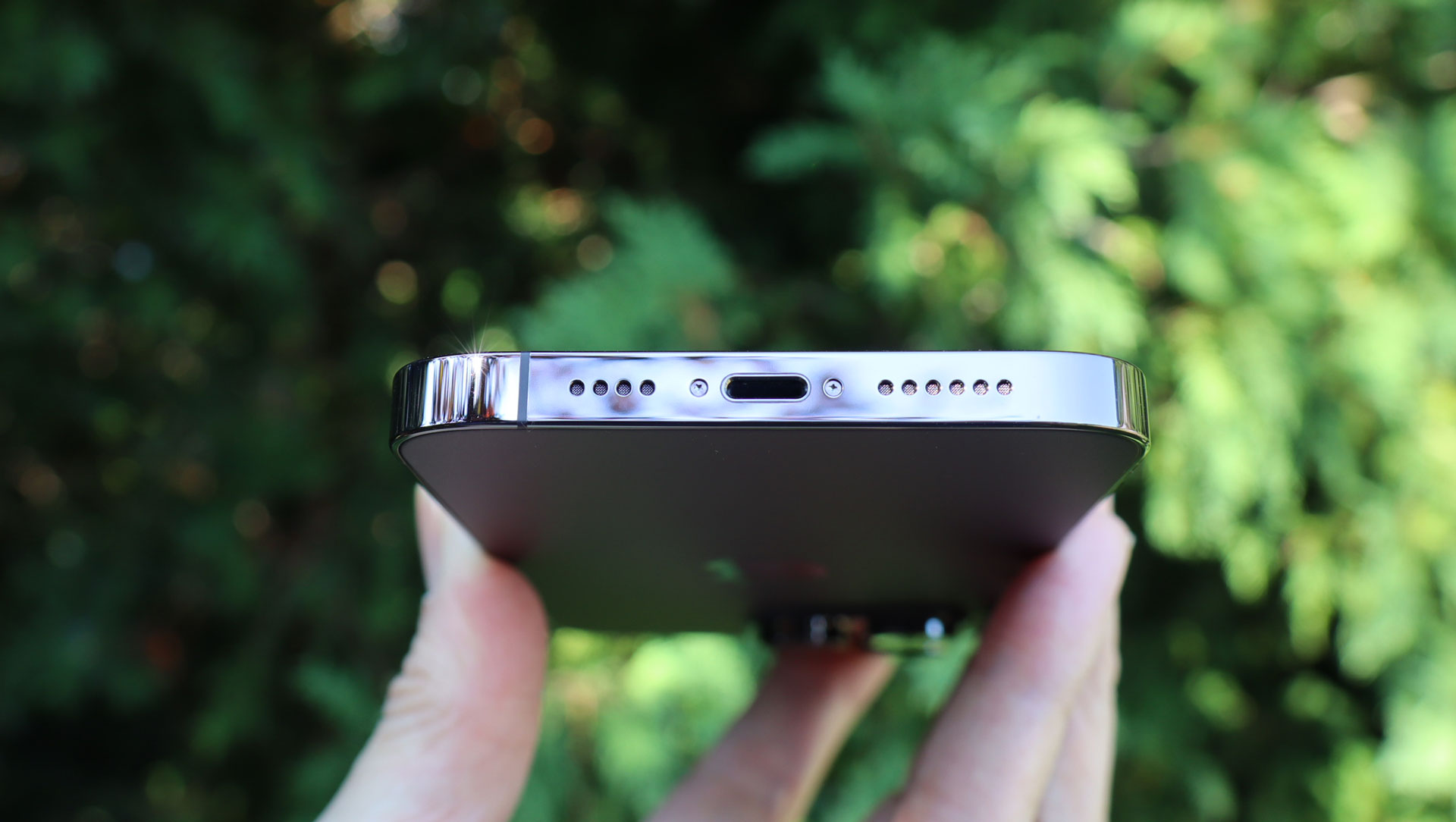
A quick note about the Apple iPhone 14 Pro Max’s speaker system. Its two stereo speakers – one on the bottom edge of the phone and the other at the very top edge of the screen – can produce loud and sharp sound, but they’re also capable of spatial audio. This can be a real treat when watching Dolby Atomos-supporting content, like Netflix’s The Adam Project.
Spatial audio puts the sound all around your head, so that a spaceship can sound like it’s flying in from the left side of the screen and then off to the right side. If they don’t mind crowding around the 6.7-inch screen, there’s enough high-quality audio here to entertain a small group of people.
Naturally, the speakers are also loud enough to power the music for an entire party. Apple Music has an extensive spatial audio selection, and we loved listening to the Elton John, Dua Lipa Cold Heart remix. It, as the kids say, ‘slaps’.
Pair the iPhone with a set of AirPods Pro 2 though, and you'll really get the benefit. While the two can't connect over a wide enough connection to allow Lossless audio to be streamed, the sound quality is so impressive. Sure, this isn't a situation limited to the new iPhone, but it's a really impressive set up.
Pair the new iPhone 14 Pro Max with these buds and watch a movie in Spatial Audio - and the immersion is a real treat.
Sometimes people forget that iPhones are also… phones, we make so few make voice calls these days (and are more likely conduct FaceTime calls instead).
The good news is that call quality is excellent. This is also a 5G phone, which means that, when you have the connectivity, you get lots of high-bandwidth data. Our Verizon model, tested in the US, wasn’t always lucky enough to find good 5G, however.
iPhone 14 Pro Max performance and specs
- Apple's latest A16 Bionic
- Built on a more-efficient 4-nanometer process
- 1 billion more transistors than the A15 Bionic
- Approximately 6GB of RAM with no option for more
Aside from the multi-element lenses and larger sensors, Apple’s new A16 Bionic chipset is the engine behind the iPhone 14 Pro Max’s photography capabilities.
This new chip has, at 16 billion transistors, a billion more transistors than the A15 Bionic in the iPhone 14 and 14 Plus. At its launch event, Apple claimed the new chip is capable of 17 trillion operations per second. It’s also built on a 4-nanometer process instead of the A15’s 5-nanometer process, which should make for a more efficient mobile CPU.

Running Geekbench 5 on the new phone reveals a chip that is incrementally more powerful than the A15 Bionic.
Both have a 6-core CPU, 5-core GPU (the previous A15 on the non-Pro iPhone 13 had four GPU cores), and a 16-core neural engine. Basically, this isn’t just rearchitected silicon; it’s been cranked up for better performance across a range of tasks.
At least based on the scores we saw, Apple’s silicon is still ahead of Qualcomm’s current Snapdragon 8 Gen 1. Of course, that’s also a powerful mobile CPU, and having now reviewed both the new iPhone 14 Pro Max and Samsung’s Galaxy S22, we can report that neither is wanting in the performance department.
- Performance score: 5/5
iPhone 14 Pro Max eSIM and satellite connectivity
- No SIM slot in the US
- UK can't really use eSIM feature yet
- Satellite connectivity free for two years, coming November
In the US, the entire iPhone 14 line is now SIM-slot free, instead employing eSIM technology to connect you to the cellular network. In our testing, it introduced no difficulty in setting up the iPhone 14 Pro Max.
Granted, Apple already assigned a phone number to our test unit, but if you want to transfer your existing physical SIM info from your old iPhone to a new one, you should be able to do it electronically, without the help of your carrier. We’ll understand how well this all works when these new SIM-less phones get into consumers’ hands.
The other cool new connectivity feature is satellite-based Emergency SOS.
Apple is working with Globalstar low-Earth-orbit satellites to provide this extra level of 911 support. While it’s not something we could test, we did see it in action at Apple’s campus at the launch.
We were taken up a hill where cell and Wi-Fi were purposely unavailable. On the iPhone 14 Pro, you’ll notice a tiny ‘SOS’ and satellite icon in the upper-right quadrant. These icons won’t appear unless you’re outside, and with a clear view of the sky.
If you dial 911 in this situation, the iPhone 14 Pro Max will, as it did in our demo, ask if you want to try emergency text via satellite. After that, an on-screen emergency assistant offers a visual cue for which way you should face to connect to the nearest satellite. It then asks you a series of questions that the system can deliver via compressed text to Apple’s relay center, which then contacts the emergency services.
If during the communication a satellite moves out of range, the system will guide you to face in the right direction to reconnect. You'll also get a complimentary two years' of the service when it lands in November 2022 with an iOS 16 update.
While satellite communications are primarily for emergency situations, you can use the system to let people know via Find My that, for example, you successfully made it to the top of Mount Everest.
iPhone 14 Pro Max: iOS 16 shines
- iOS 16 out the box
- The new lock screen is a big win
- Are you ready to unsend texts?
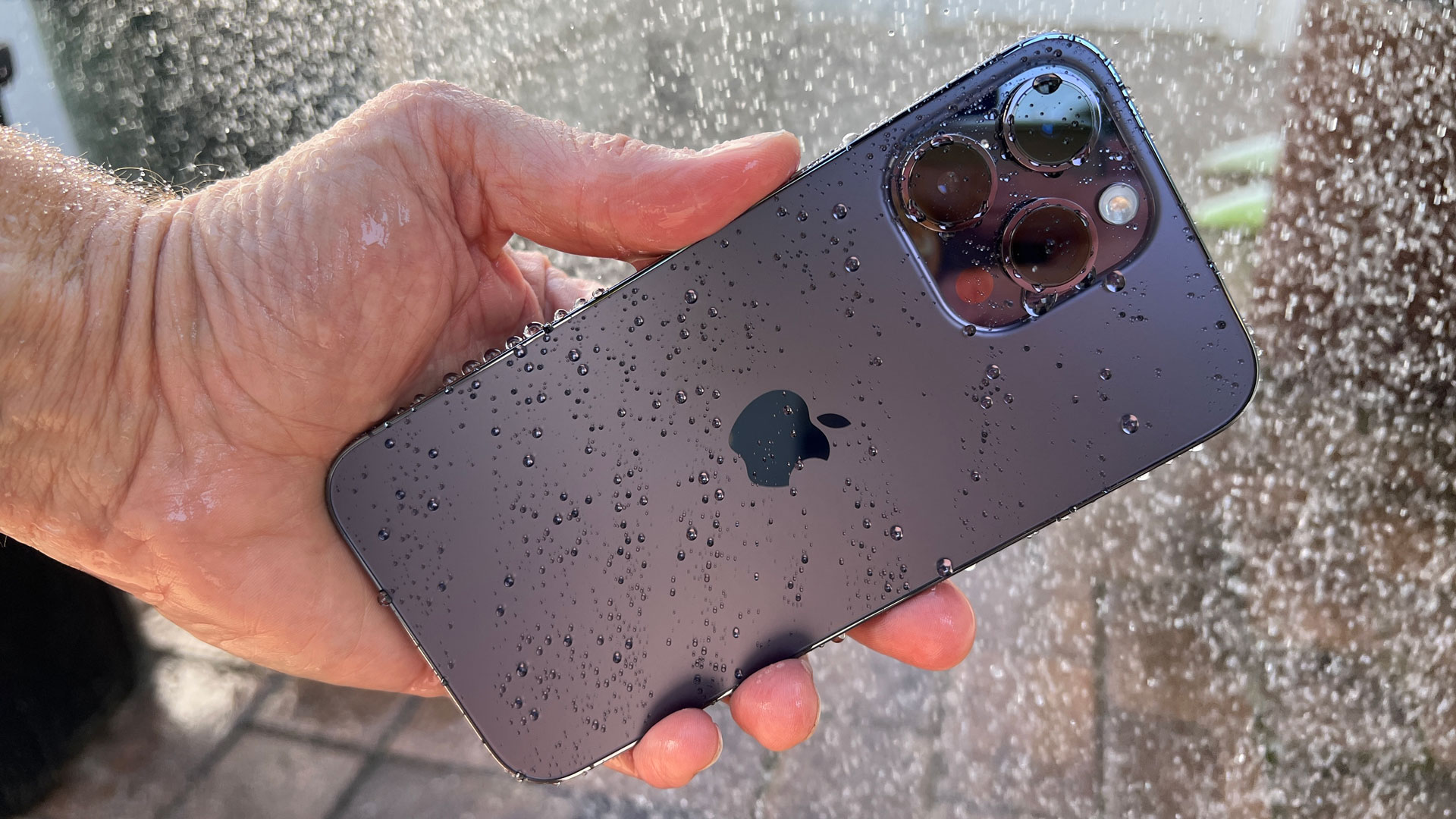
All Apple iPhone 14 handsets ship with iOS 16. It’s a worthwhile iOS upgrade, which offers some of the most significant platform changes we’ve seen in a while.
Highlights include the lock screen. We had fun adding our own custom photo, and positioning it until a portion of our iPhone 14 Pro Max beauty shot (one where the phone is splashed with water) occluded the redesigned time readout. That image segmentation disappears in always-on mode (the clock appears over the subject).
The image segmentation also lets you grab a subject from any image and drag it into another app, like texts or Notes.
Applying different focus modes to one of the many lock screens is useful. We made, for example, one for work and one for personal.
The new multi-segment trip directions in Maps is a nice addition, too, and we’ve been freely editing text messages on the go. Even something as simple as the new search button on the home screen makes your new iPhone more useful.
Overall, there’s a lot to discover in iOS 16, but our overall impression is that it makes for a better iPhone 14 Pro Max experience.
- Software score: 4.5/5
iPhone 14 Pro Max: Should I buy it?
| Attributes | Notes | Rating |
|---|---|---|
| Design | Good looking quality build and design | 4/5 |
| Display | A big upgrade and no more notch | 5/5 |
| Performance | Apple A16 Bionic is a step up | 5/5 |
| Camera | The upgraded camera array finally brings pixel binning to the iPhone | 4/5 |
| Battery | Greater battery life variance depending on usage compared to most phones | 4/5 |
| Software | iOS 16 is one of Apple's biggest platform updates in a while | 4.5/5 |
| Value | People seem willing to pay for Apple's apex iPhones | 4/5 |
Buy it if...
You want the biggest and best iPhone screen
Apple has finally implemented an adaptive refresh rate and an always-on display. You can also get these on the iPhone 14 Pro, but you won’t have that big, pocket-busting screen, as well as the awesome Dynamic Island.
You want more battery life
The iPhone 14 Pro Max is rated for three more hours of battery life than the iPhone 14 Pro. Granted, this is highly variable, based on activity, but all things being equal, you should have better battery life on the bigger phone
You want current-gen camera technology
This is your first chance to see how Apple handles pixel binning with a huge 48MP sensor that can combine 4 pixels into one, for greater color and image performance. Plus, it gives you that extra, full-resolution 2x optical zoom.
Don't buy it if...
You're on a tight budget
This is Apple’s most expensive handset – although if you have a device that’s eligible for a great trade-in deal, you might save as much as $1,000.
You want more zoom
Apple iPhone 14 Pro and Pro Max top out at 3x optical zoom. Even the digital zoom is a slightly anemic 15x.
Also consider
Samsung Galaxy S22 Ultra
Our Samsung Galaxy S22 Ultra review found a big, powerful, and attractive Android phone (if you like them monolithic). It’s super-versatile, ready for important work, hand-written notes, gaming, and casual big-screen web browsing – and the cameras are a clear highlight, with the Space Zoom capabilities taking you to infinity and beyond. And, yes, you’ll pay handily for all these features.
Read our Samsung Galaxy S22 Ultra review for more
OnePlus 10 Pro
The OnePlus 10 Pro is a great premium all-around phone – it has a good-looking screen, fast charging and powerful internals. The cherry on the cake is that it costs less than other Pro phones, making it an incredibly tempting choice. However, its Achilles’ Heel is the camera experience - there are a few problems with both the hardware and software that might put off passionate photographers.
Read our OnePlus 10 Pro review for more
Samsung Galaxy Z Fold 4
The Samsung Galaxy Z Fold 4 is a do-everything device that presents few compromises. It is good for photography, multi-tasking your work and watching Netflix, however the high price might put off some buyers.
Read our Samsung Galaxy Z Fold 4 review for more
First reviewed: September 2022

A 38-year industry veteran and award-winning journalist, Lance has covered technology since PCs were the size of suitcases and “on line” meant “waiting.” He’s a former Lifewire Editor-in-Chief, Mashable Editor-in-Chief, and, before that, Editor in Chief of PCMag.com and Senior Vice President of Content for Ziff Davis, Inc. He also wrote a popular, weekly tech column for Medium called The Upgrade.
Lance Ulanoff makes frequent appearances on national, international, and local news programs including Live with Kelly and Mark, the Today Show, Good Morning America, CNBC, CNN, and the BBC.
- Gareth BeavisFormerly Global Editor in Chief
